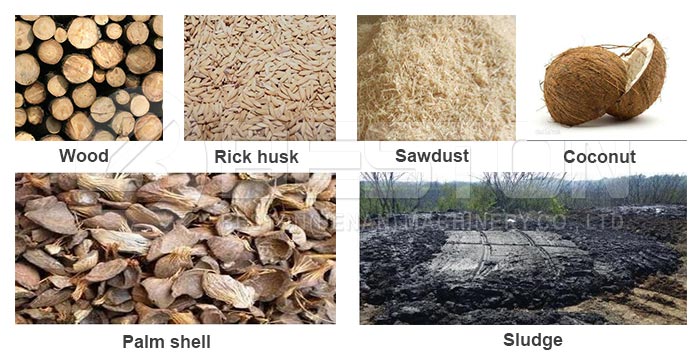In the intricate world of sustainable energy, an alchemical dance unfolds—pyrolysis in biomass. This process, akin to nature’s transformative ballet, is a cornerstone in the quest for renewable resources. Let’s embark on a journey into the heart of this dynamic interplay, where biomass metamorphoses under the spell of pyrolytic wizardry.
The Genesis of Biomass
Before we dive into the enchantment of pyrolysis, let’s first understand the protagonist—biomass. Picture sprawling forests, agricultural residues, or even organic waste; these are the unsung heroes of the biomass narrative. Biomass, in its various forms, serves as the raw canvas awaiting the stroke of pyrolytic artistry.
This is not merely about organic matter; it’s about harnessing the latent energy concealed within, a potential waiting to be unlocked.
Pyrolysis: The Alchemy Unveiled
Now, imagine the scene—a controlled environment where biomass undergoes pyrolysis. This is not your ordinary combustion; it’s an alchemical transformation where heat, in the absence of oxygen, triggers a cascade of molecular metamorphoses. More information on biomass pyrolysis machine here.
In this crucible of pyrolytic artistry, complex organic compounds within the biomass surrender to the fervent dance of heat. The result? A trio of distinct products: biochar, bio-oil, and syngas.

Biochar: The Carbon Residue
Within the alchemical aftermath of pyrolysis in biomass, emerges biochar—a carbon-rich residue with a porous structure reminiscent of a cosmic sponge. It’s not merely ash; it’s a stable form of carbon, a charred relic ready to enrich the soil.
Imagine this biochar becoming a custodian of nutrients, enhancing soil structure, and fostering microbial activity. It’s the silent guardian beneath our feet, a testament to the regenerative potential of pyrolytic byproducts.
Bio-oil: Liquid Gold
As the biomass surrenders its organic essence to pyrolysis, a second enchanting byproduct emerges—bio-oil. Picture this as liquid gold, a complex blend of aromatic compounds with applications ranging from biofuel to chemical feedstock.
The beauty of bio-oil lies not just in its versatility but in its potential to replace conventional fossil fuels, reducing our reliance on non-renewable resources. It’s a liquid promise of a greener, more sustainable energy landscape. See the sawdust charcoal machine here.
Syngas: The Gaseous Harmony
Completing the trio is syngas—a gaseous medley of carbon monoxide, hydrogen, and trace elements. This isn’t mere gas; it’s a harmonious composition with the potential to fuel engines, generate electricity, or even serve as a precursor for chemicals.
In the symphony of pyrolytic conversion, syngas is the dynamic conductor, orchestrating a renewable energy crescendo. It’s the invisible force driving the wheels of sustainable innovation.
Biomass Pyrolysis in Action: From Forests to Factories
Now, imagine the scope of pyrolysis in biomass expanding from the heart of dense forests to industrial facilities. It’s not just about quaint scenes of controlled burns; it’s about scalable solutions meeting the demands of a world hungry for sustainable energy.
Forestry residues, agricultural byproducts, and even dedicated energy crops—all find their way into the pyrolytic crucible. This is an ecosystem where sustainable practices intersect with industrial ingenuity, a marriage of ecology and technology.
Challenges and the Road Ahead
In the ever-evolving landscape of pyrolysis in biomass, challenges emerge. The need for efficient technologies, scalability, and optimized processes poses hurdles. Yet, within these challenges lie the seeds of progress. View the coconut shell charcoal making machine here.
Researchers, engineers, and visionaries within the field are working towards solutions—innovations that streamline pyrolytic processes, enhance biochar’s quality, and elevate the overall efficiency of biomass conversion.

Beyond Energy: Pyrolysis and Circular Economy
As we explore the realms of pyrolysis in biomass, it becomes evident that its impact extends beyond energy production. It’s a catalyst for a circular economy—a paradigm where waste is minimized, and byproducts become valuable resources.
Imagine a world where agricultural residues no longer burden the fields but instead contribute to sustainable energy and soil enrichment. It’s not a distant utopia; it’s the potential unlocked by the alchemical dance of biomass pyrolysis.
Pyrolysis in Biomass: A Renewable Odyssey
In the grand tapestry of renewable energy, pyrolysis in biomass stands as a vibrant thread, weaving together ecology, innovation, and sustainability. It’s not just a process; it’s a renewable odyssey—a journey where the latent potential within biomass is liberated, transforming it into a source of regenerative power.
As we marvel at the alchemical dance of pyrolysis, let’s envision a future where every smoldering ember tells a story of sustainable energy, where biomass, through the wizardry of pyrolysis, becomes a cornerstone in our quest for a greener, more harmonious world. Check Beston Group here.